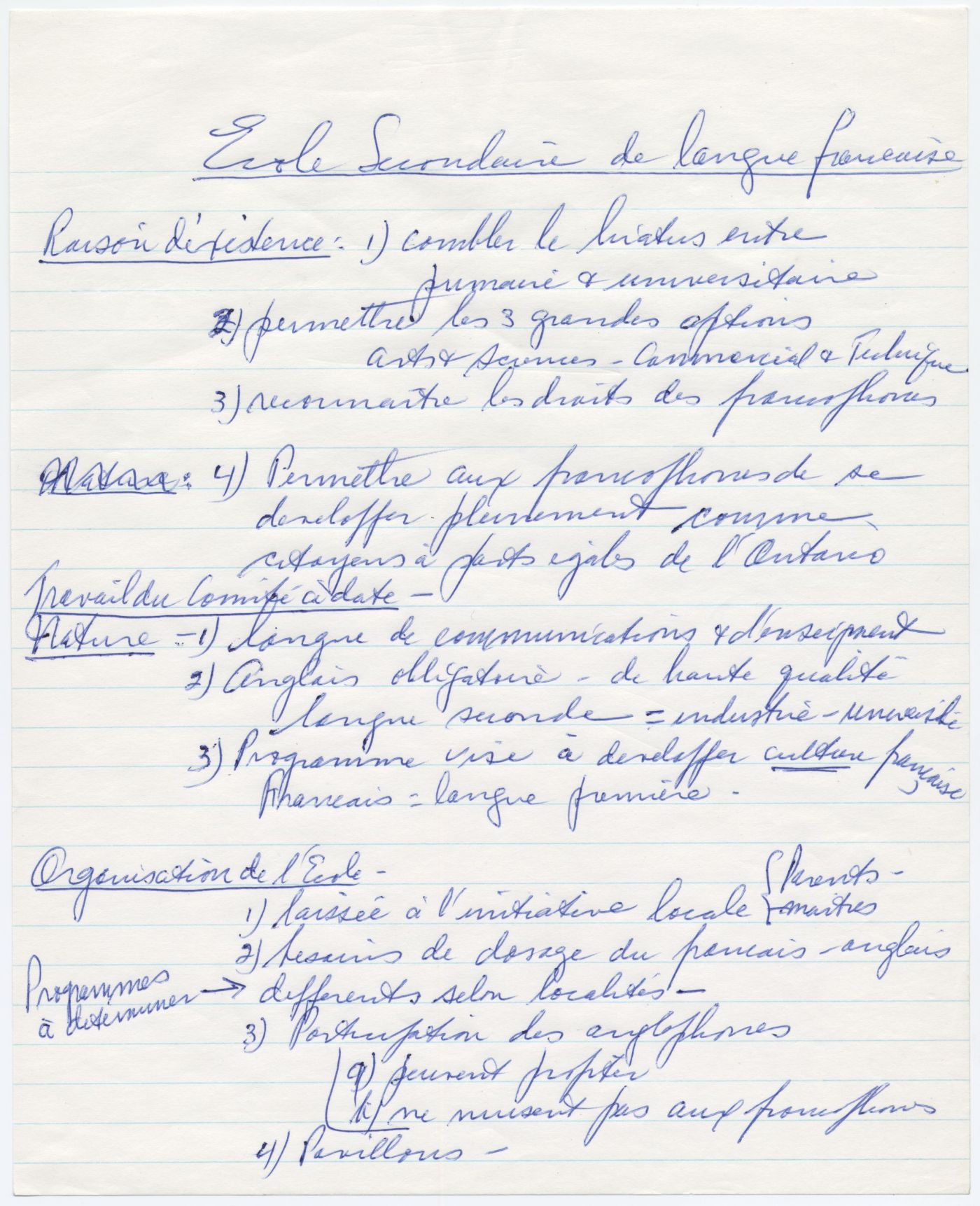The community, however, remains strongly divided on the issue. Many cannot resign themselves to dissociating French education from its traditional Catholic elements. It takes the intervention of the Archbishop of Ottawa, Mgr Joseph-Aurèle Plourde, to calm things down: in a pragmatic move, he invites the clergy and the laity to join forces to provide education in French, even if it is non-denominational. The process which follows leads, in the wake of the Bériault Committee's recommendations, to the July 1968 adoption of legislation enabling public school boards in the province to establish French-language secondary schools.
The financial crisis which hits the only French-language secondary schools in Ontario, namely the private Catholic colleges, worsens in the 1960s. Many close their doors, while the future of others is threatened. More and more voices, especially among Franco-Ontarians from bilingual high schools, rise up to demand public French-language high schools accessible to all.
This is the context, in the fall of 1971, in which the Académie De-La-Salle passes the torch to the École secondaire publique De La Salle, which receives students from the Académie De-La-Salle as well as the Mont Saint-Joseph and Rideau Street convents. The École secondaire Notre-Dame-de-Lourdes, formerly a boarding school for the Daughters of Wisdom, becomes the École secondaire Belcourt, and welcomes its first students in 1971. Barely ten years later, have 10,000 Francophone students attended eleven French-language public secondary schools, not to mention 4,000 students enrolled in French-language classes in Anglophone high schools.
In 1984, in a dramatic turn of events, the government of Bill Davis surprises everyone by introducing a bill to ensure completion of a separate Catholic school system to the end of secondary school. The unanimity that prevailed in preceding years on the need to develop a single Francophone school system including Catholic elementary schools and secondary schools no longer holds. Public and Catholic school boards subsequently compete ruthlessly to develop their own networks.
Ottawa’s institutional landscape reflects this duality. In Orléans, for example, the École secondaire catholique Béatrice-Desloges and the École secondaire publique Gisèle-Lalonde live side by side. The two schools embody two heroic female figures advocating for educational rights for Francophones in Ottawa – the first rooted in tradition and the past, the second representing recent and contemporary struggles. Some see it as a sad rivalry, others as a happy complementarity.
